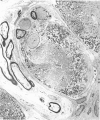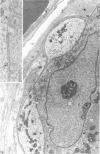Abstract
The long held view that spiral nerve endings in extraocular muscles are sensory, recently shown to be incorrect for monkeys, was tested in man. Muscle samples were taken from orbits of five patients after eye enucleation and prepared for light and electron microscopy. Most spiral endings terminated in the motor end plate band in several well separated clusters of boutons applied to various aspects of individual fibres, in contrast to the single group of boutons of other endings. They displayed a dapple appearance using the acetylcholinesterase technique and possessed fine structural features characteristic of motor end plates. Approximately 5% of motor end plates had spiral endings and most were sheathed by extensions from perineural epithelial cells. Hence, the spiralling of nerve fibre endings in man, as in monkeys, is a device for conveying boutons to dapple motor end plates rather than for monitoring the contraction of muscle fibres. It is suggested that muscle fibres with dapple motor end plates may be responsible for the exceptional speed of contraction of extraocular muscles.
Full text
PDF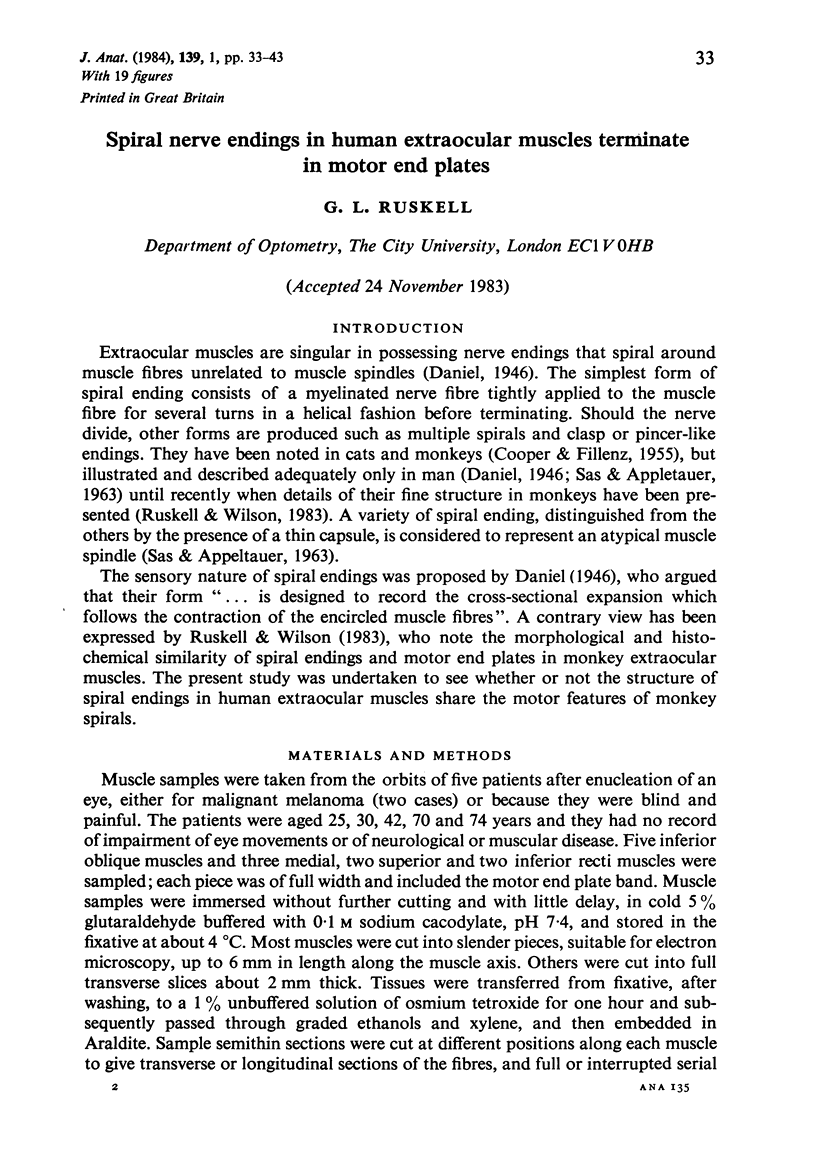
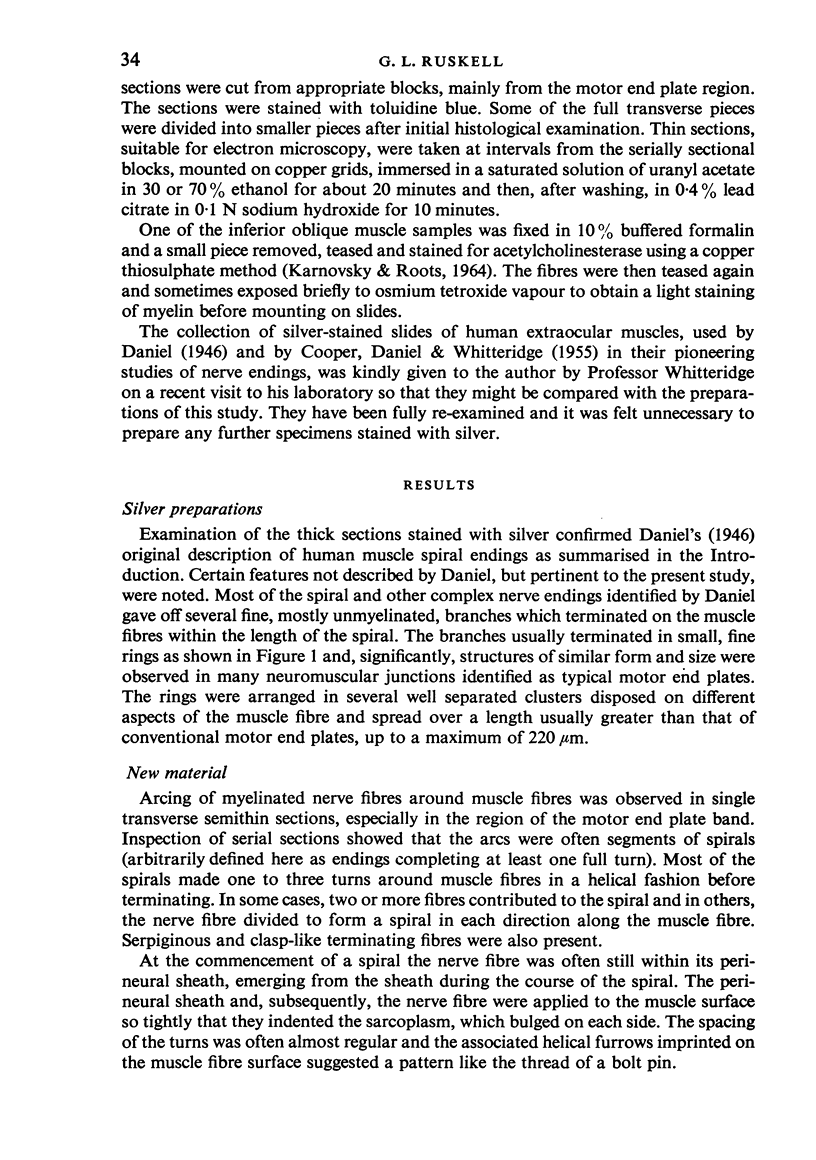
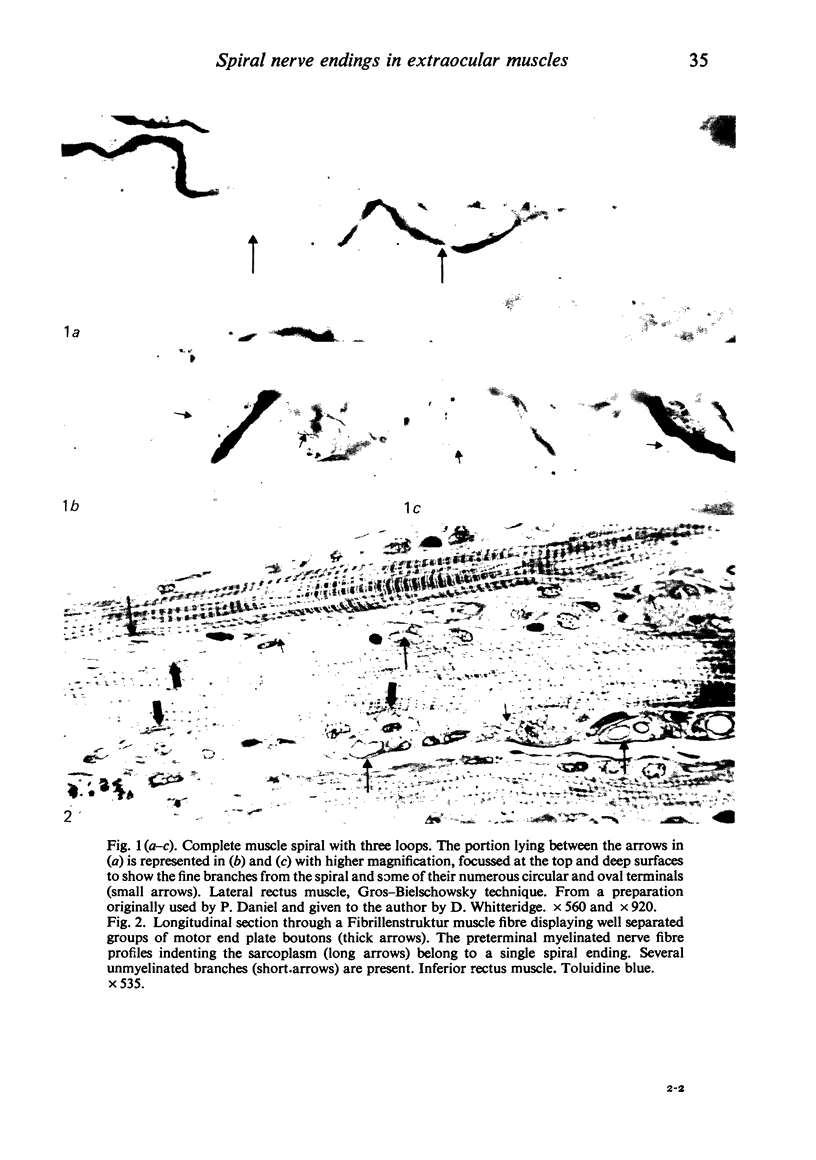
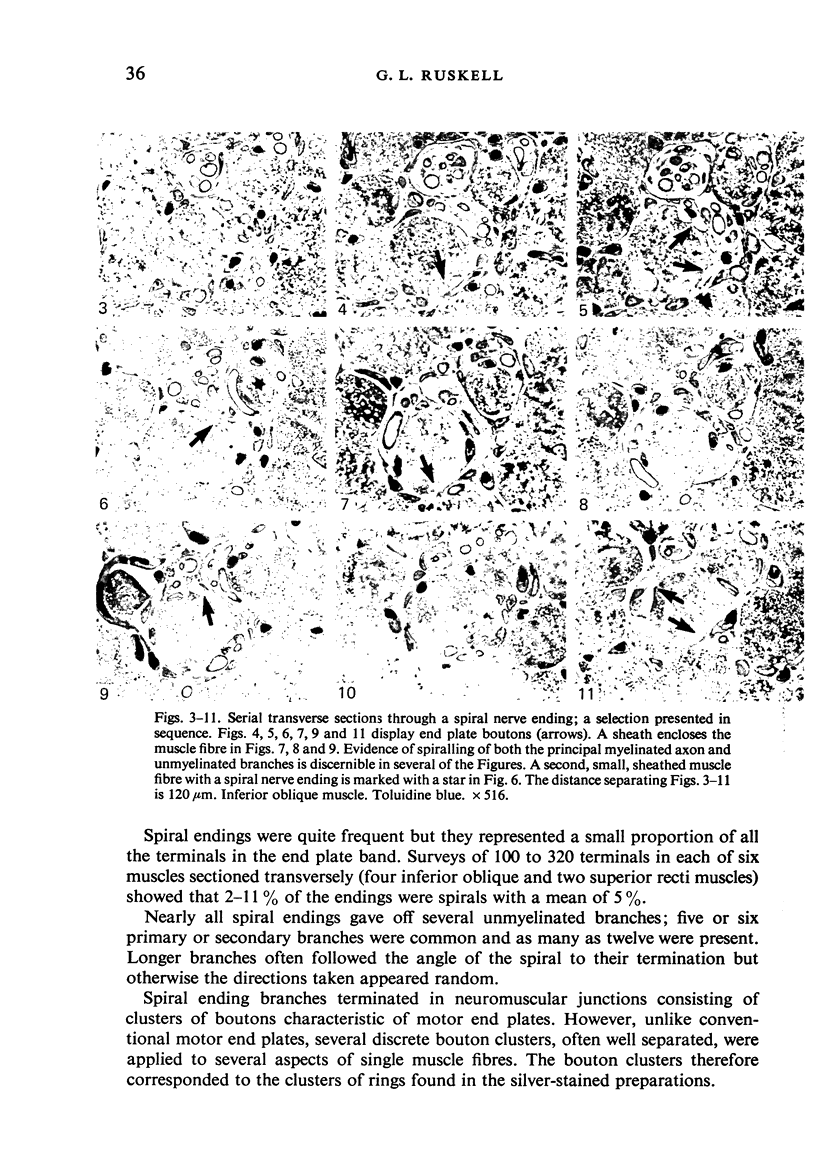
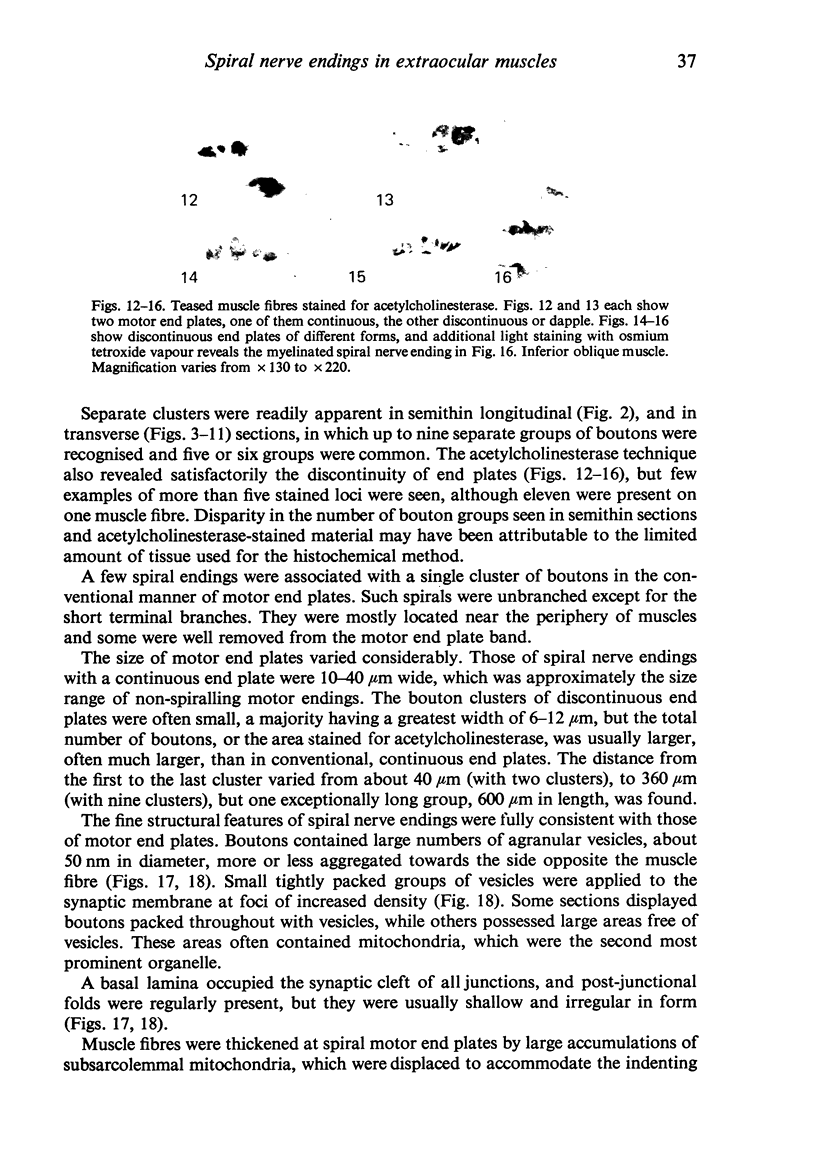
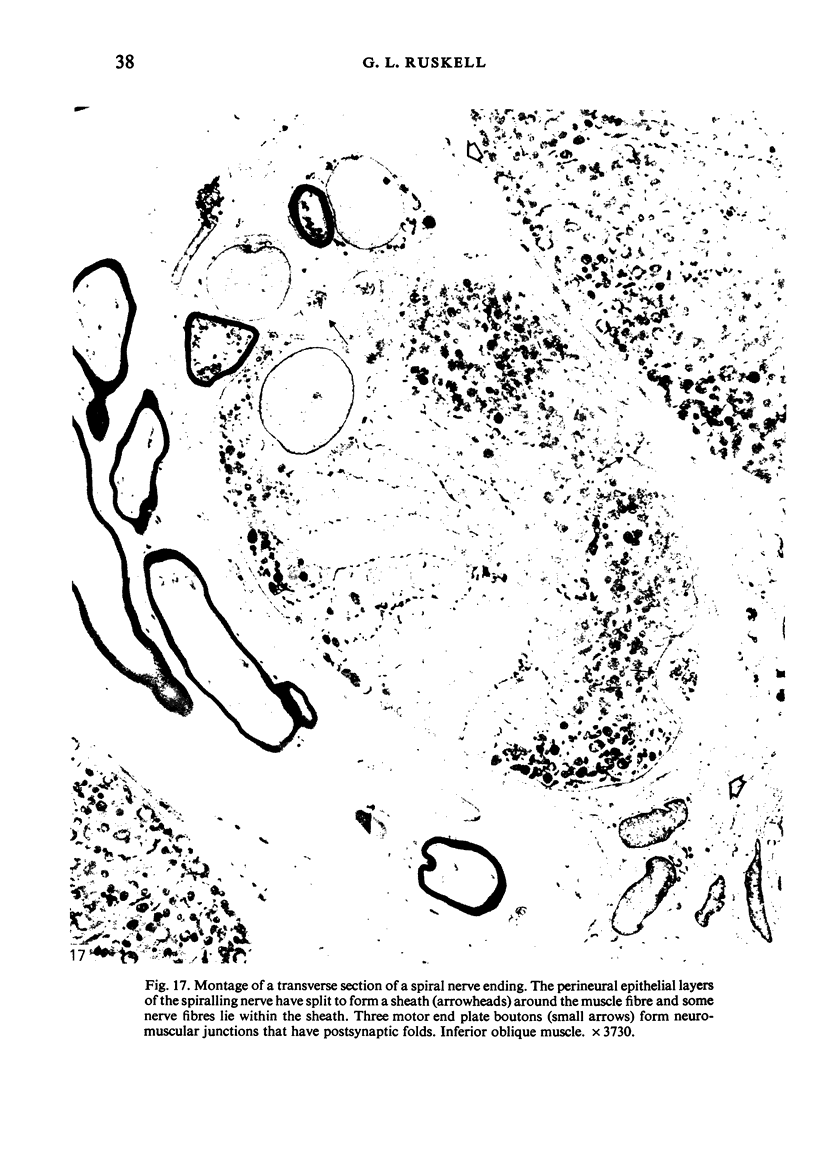
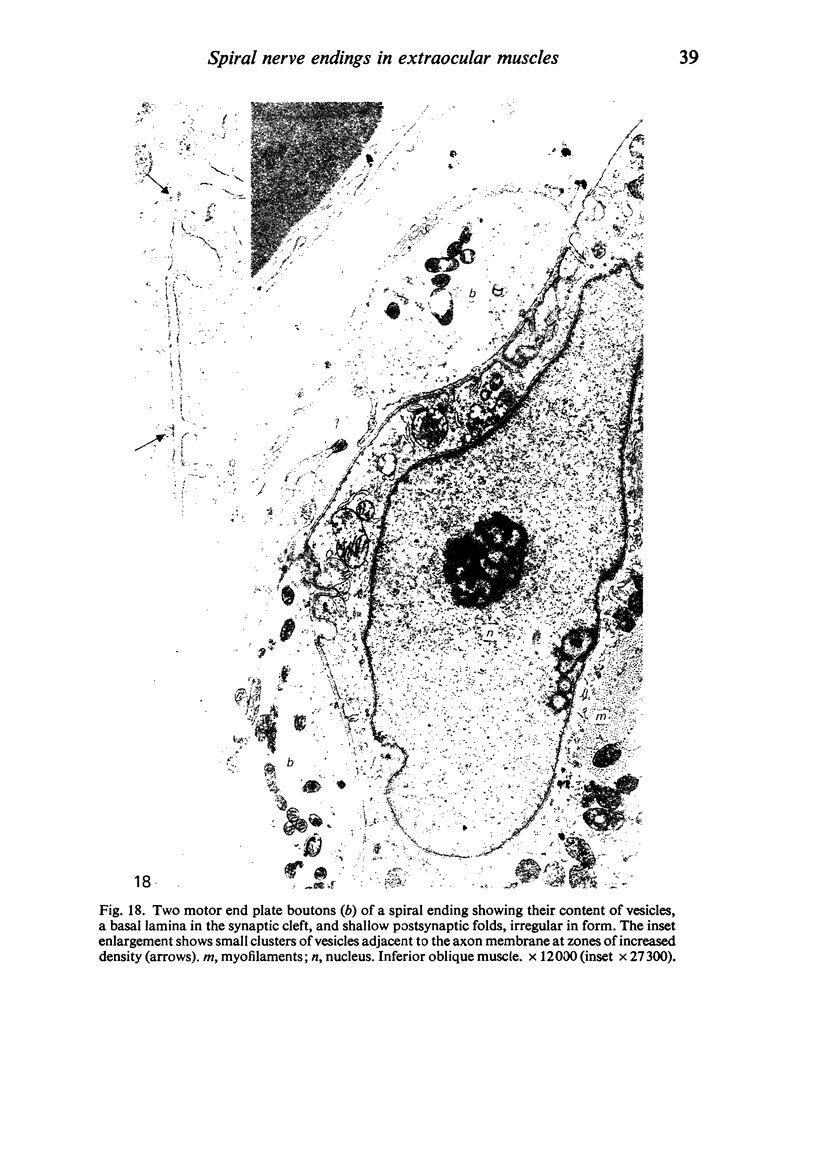
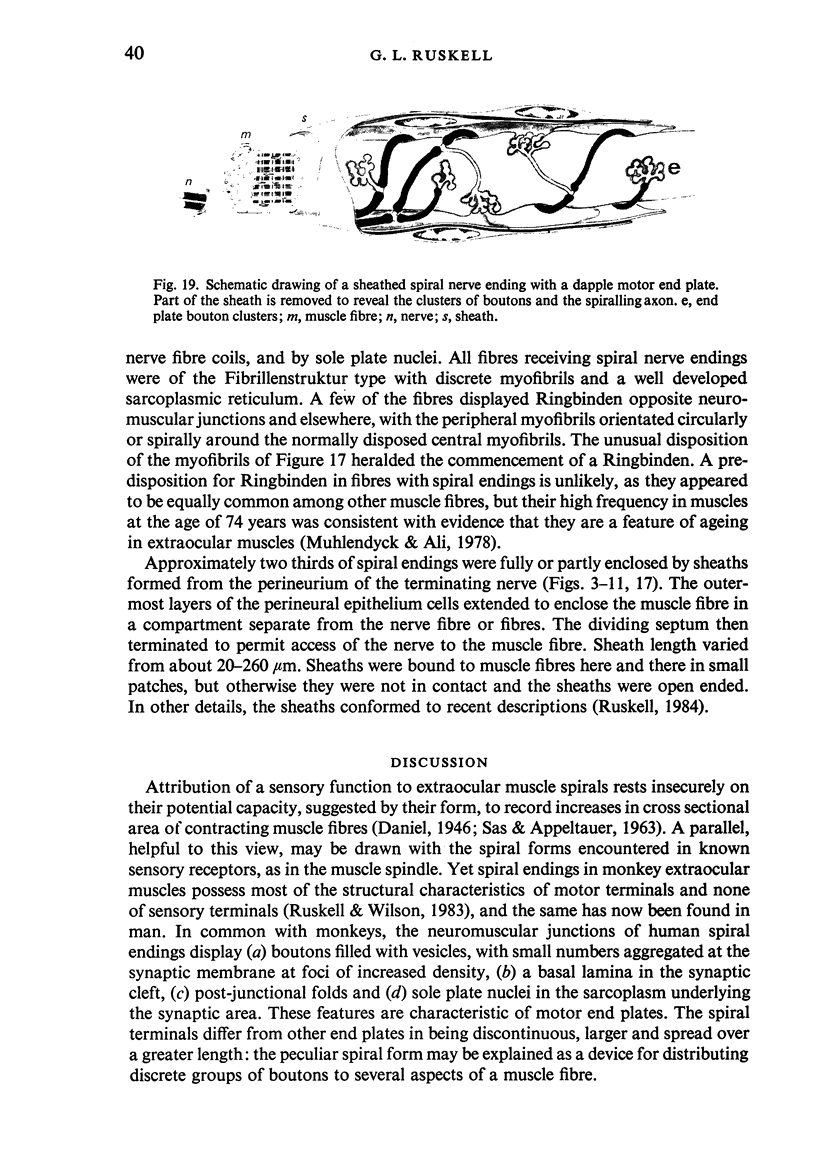
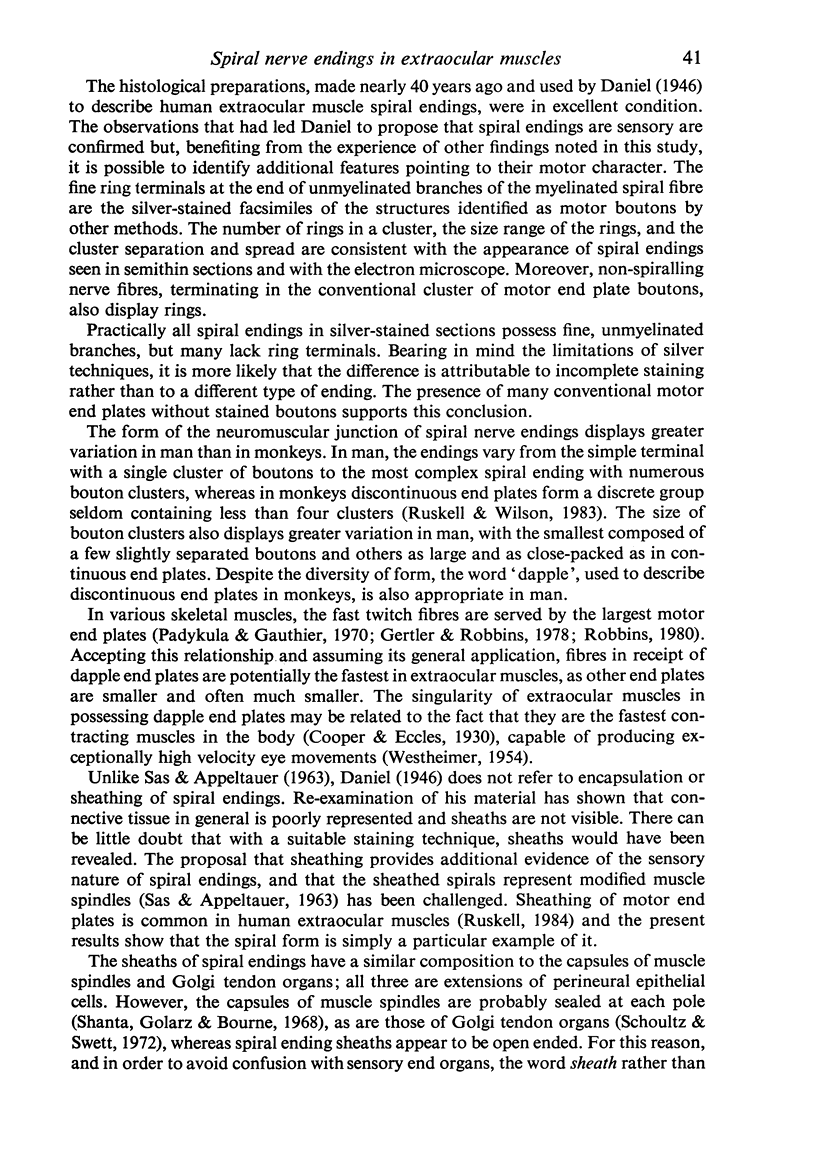
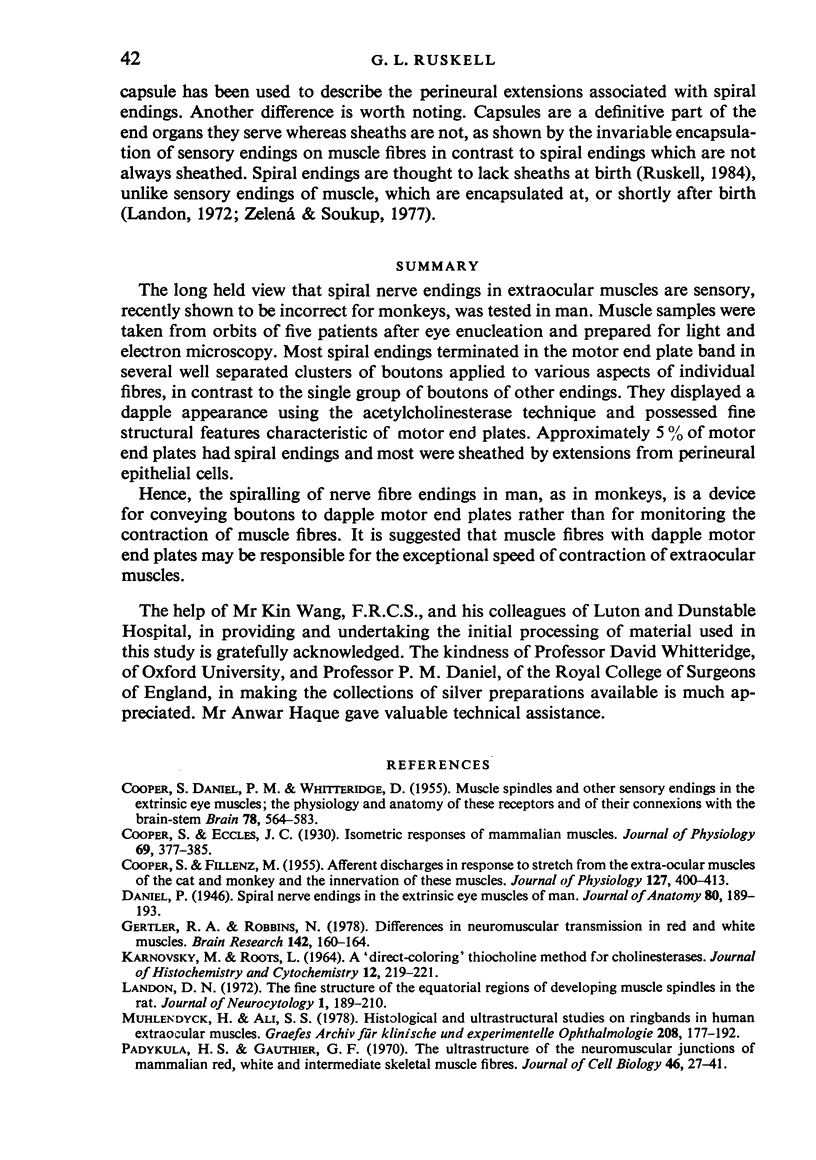
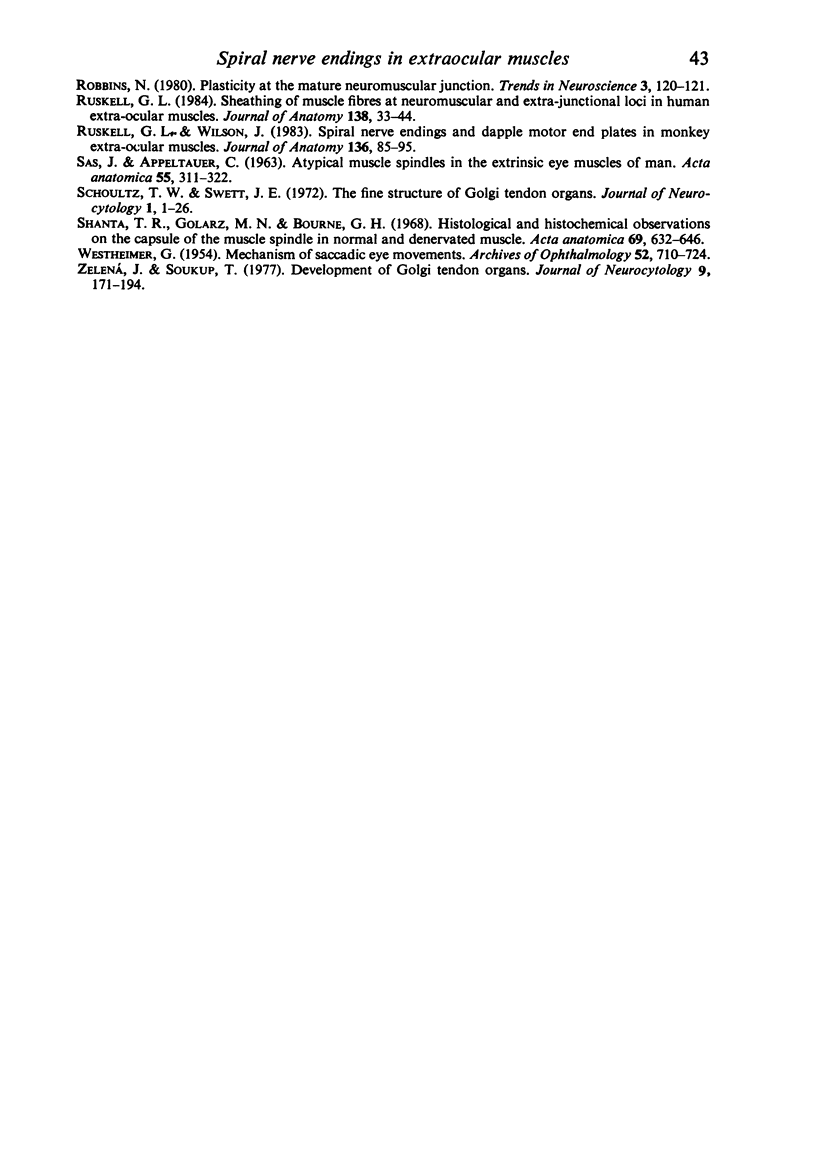
Images in this article
Selected References
These references are in PubMed. This may not be the complete list of references from this article.
- COOPER S., DANIEL P. M., WHITTERIDGE D. Muscle spindles and other sensory endings in the extrinsic eye muscles; the physiology and anatomy of these receptors and of their connexions with the brain-stem. Brain. 1955;78(4):564–583. doi: 10.1093/brain/78.4.564. [DOI] [PubMed] [Google Scholar]
- COOPER S., FILLENZ M. Afferent discharges in response to stretch from the extraocular muscles of the cat and monkey and the innervation of these muscles. J Physiol. 1955 Feb 28;127(2):400–413. doi: 10.1113/jphysiol.1955.sp005266. [DOI] [PMC free article] [PubMed] [Google Scholar]
- Cooper S. The isometric responses of mammalian muscles. J Physiol. 1930 Jun 27;69(4):377–385. doi: 10.1113/jphysiol.1930.sp002657. [DOI] [PMC free article] [PubMed] [Google Scholar]
- Daniel P. Spiral nerve endings in the extrinsic eye muscles of man. J Anat. 1946 Oct;80(Pt 4):189–193. [PMC free article] [PubMed] [Google Scholar]
- Gertler R. A., Robbins N. Differences in neuromuscular transmission in red and white muscles. Brain Res. 1978 Feb 17;142(1):160–164. doi: 10.1016/0006-8993(78)90186-5. [DOI] [PubMed] [Google Scholar]
- KARNOVSKY M. J., ROOTS L. A "DIRECT-COLORING" THIOCHOLINE METHOD FOR CHOLINESTERASES. J Histochem Cytochem. 1964 Mar;12:219–221. doi: 10.1177/12.3.219. [DOI] [PubMed] [Google Scholar]
- Landon D. N. The fine structure of the equatorial regions of developing muscle spindles in the rat. J Neurocytol. 1972 Sep;1(2):189–210. doi: 10.1007/BF01099184. [DOI] [PubMed] [Google Scholar]
- Mühlendyck H., Ali S. S. Histological and ultrastructural studies on the ringbands in human extraocular muscles. Albrecht Von Graefes Arch Klin Exp Ophthalmol. 1978 Nov 8;208(1-3):177–191. doi: 10.1007/BF00406992. [DOI] [PubMed] [Google Scholar]
- Padykula H. A., Gauthier G. F. The ultrastructure of the neuromuscular junctions of mammalian red, white, and intermediate skeletal muscle fibers. J Cell Biol. 1970 Jul;46(1):27–41. doi: 10.1083/jcb.46.1.27. [DOI] [PMC free article] [PubMed] [Google Scholar]
- Ruskell G. L. Sheathing of muscle fibres at neuromuscular junctions and at extra-junctional loci in human extra-ocular muscles. J Anat. 1984 Jan;138(Pt 1):33–44. [PMC free article] [PubMed] [Google Scholar]
- Ruskell G. L., Wilson J. Spiral nerve endings and dapple motor end plates in monkey extra-ocular muscles. J Anat. 1983 Jan;136(Pt 1):85–95. [PMC free article] [PubMed] [Google Scholar]
- SAS J., APPELTAUER C. ATYPICAL MUSCLE SPINDLES IN THE EXTRINSIC EYE MUSCLES OF MAN. Acta Anat (Basel) 1963;55:311–322. doi: 10.1159/000142481. [DOI] [PubMed] [Google Scholar]
- Schoultz T. W., Swett J. E. The fine structure of the Golgi tendon organ. J Neurocytol. 1972 Jul;1(1):1–26. doi: 10.1007/BF01098642. [DOI] [PubMed] [Google Scholar]
- Shantha T. R., Golarz M. N., Bourne G. H. Histological and histochemical observations on the capsule of the muscle spindle in normal and denervated muscle. Acta Anat (Basel) 1968;69(4):632–646. doi: 10.1159/000143103. [DOI] [PubMed] [Google Scholar]
- WESTHEIMER G. Mechanism of saccadic eye movements. AMA Arch Ophthalmol. 1954 Nov;52(5):710–724. doi: 10.1001/archopht.1954.00920050716006. [DOI] [PubMed] [Google Scholar]
- Zelená J., Soukup T. The development of Golgi tendon organs. J Neurocytol. 1977 Apr;6(2):171–194. doi: 10.1007/BF01261504. [DOI] [PubMed] [Google Scholar]







